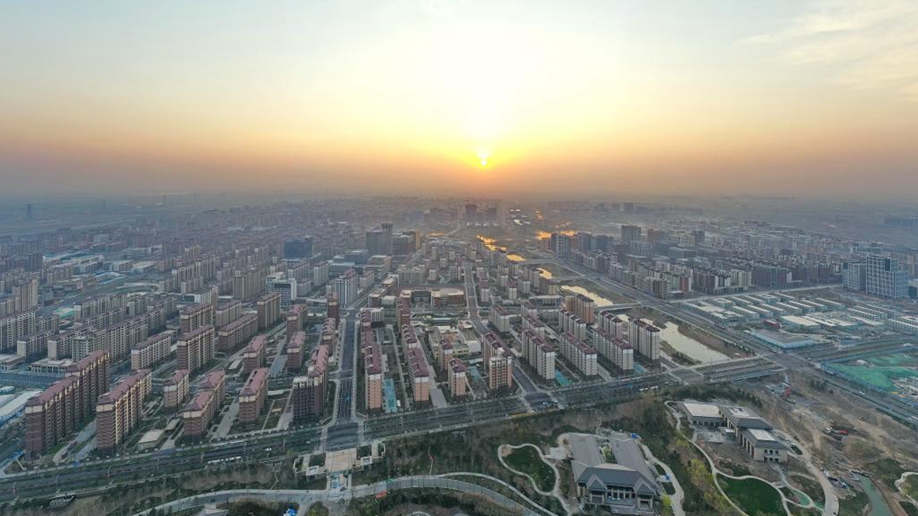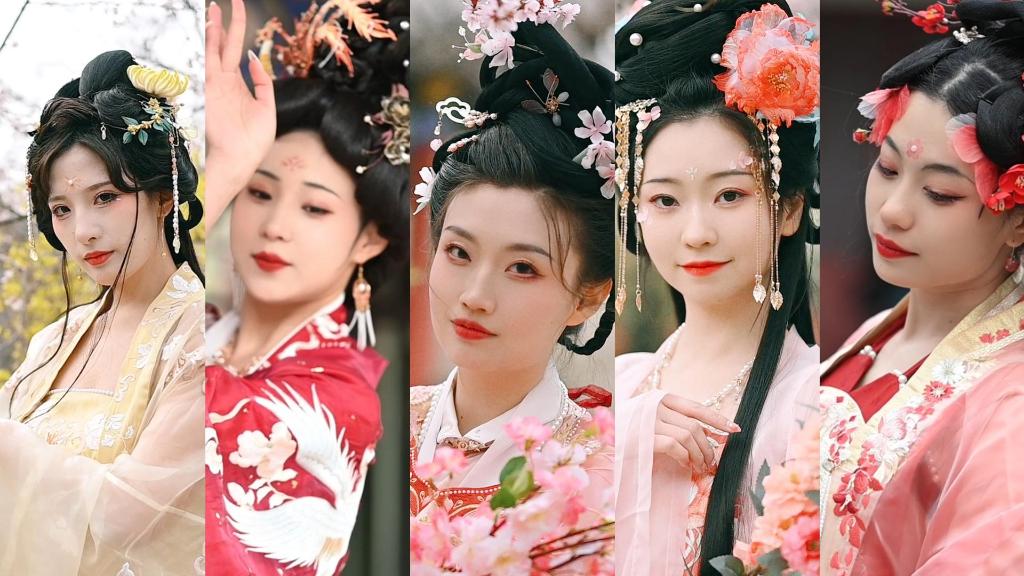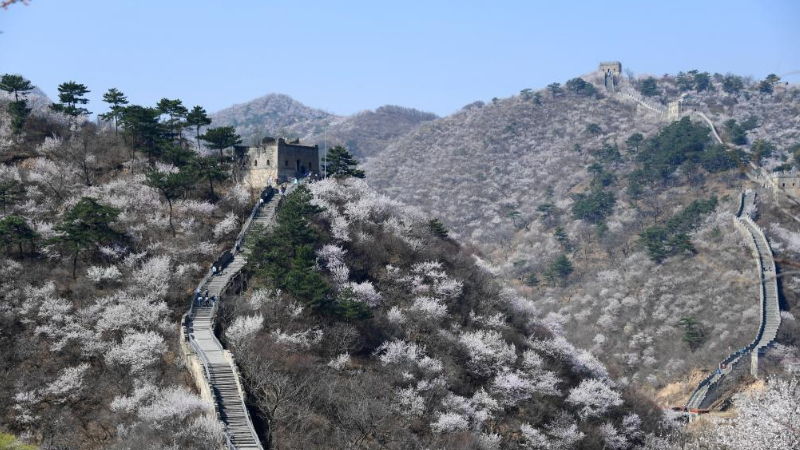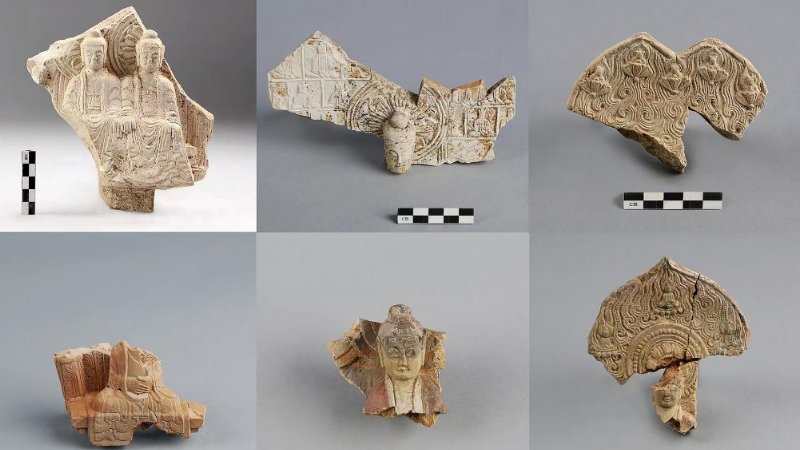
This photo taken on March 29, 2023 shows a tea-picking robot working at a tea garden in Hangzhou, capital of east China's Zhejiang Province. (Xinhua/Lin Guangyao)
HANGZHOU, April 4 (Xinhua) -- With a sun hat made of solar panels, a tea-picking robot weaves through rows of renowned Longjing tea bushes in Hangzhou's West Lake scenic spot, east China's Zhejiang Province, with its agile manipulators and caterpillar wheels.
The 550-kg robot picker is a godsend for local tea planters this season. The upcoming Qingming Festival, which falls on Wednesday this year, is the major harvest period for premium spring tea, and the local tea gardens are quite understaffed these days.
Longjing tea, also known as West Lake Dragon Well tea, is a variety of green tea. As one of China's 10 most famous teas, it is characterized by its green color, delicate aroma, mellow taste, and beautiful shape.
"The beautiful forms of a bud with one leaf or a bud with two leaves are often acknowledged as quality tea with certain recognition. And the picking work of such tea leaves has relied largely on manual work, very difficult to be replaced by machinery," said Jia Jiangming, developer of the robot, also an associate professor from the school of mechanical engineering of Zhejiang Sci-Tech University.
However, most of the tea pickers in the production areas of Longjing tea are all in their 60s, few are in their 50s, and hardly any young people willing to land jobs in the industry.

A robot picks tea using binocular stereo vision at a tea garden in Hangzhou, capital of east China's Zhejiang Province, March 29, 2023. (Xinhua/Lin Guangyao)
"If so, the Longjing tea industry may face great embarrassment when there remains nobody to help pick the leaves," Jia said when explaining why his team started to develop tea-picking robots as early as 2019.
Generally speaking, one bud and one leaf of the early spring tea is about 2 cm long, and the petiole is merely 3 to 5 mm long, thus demanding high operation accuracy of the mechanical arms. If cut at the wrong angle, the robot will damage the tea branch or lead to incomplete bud and leaf forms. These damaged tea leaves can not be adopted, only causing unpleasant waste, said the researchers.
Jia's team introduced the cognition model of convolutional neural networks in deep learning, enabling the robot to study many tea tree bud and leaf image data.
Using binocular stereo vision, the robot can position where the target bud and leaf are, cut them off precisely, then suck the leaves into its basket via its negative-pressure pipette.
Earlier this year, Jia's robot helper developed into its fifth generation, lifting the accuracy of bud and leaf recognition to 86 percent and improving the picking efficiency to 1.5 seconds per tea leaf.
Compared with the third-generation robot launched last year, the upgraded robot's overall tea-picking success rate rose from 40 percent to 60 percent.
"The new generation robot can do as well as a human tea picker," said Chen Jianneng, another researcher of the team, adding that though the robot is still in its trial operation, they plan to improve its practicability, thus allowing the tea industry to enjoy tangible benefits brought by modern mechanization in the coming future. ■












